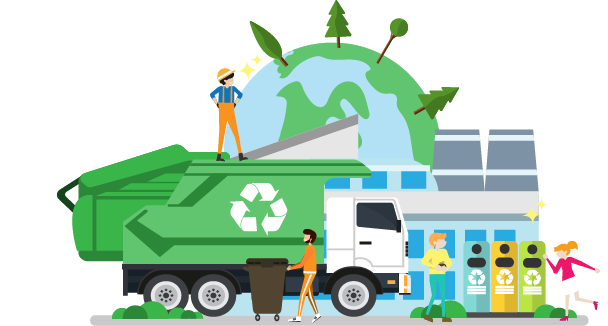Biolannoitetta peltomaahan – palauta ravinne takaisin maaperään.
Syömäkelvottomat kuoret, jämät ja tähteet sisältävät paljon tärkeitä ravinteita, jotka voidaan hyödyntää palauttamalla ne peltomaahan. Biojätteestä saadaan ilmastoviisasta biolannoitetta, jolloin emme tarvitse muualta tuotavaa kivennäislannoitetta. Se auttaa pelastamaan maaperän.
Biojätteestä saatavalla biolannoitteella on korkea ravintoarvo ja siinä on paljon viljojemme tarvitsemia aineita, kuten fosforia ja typpeä. Suomen peltomaille tuodaan kivennäislannoitetta, jolla on huomattavasti suurempi negatiivinen ympäristövaikutus. Kivennäislannoitteen tuotanto vaatii suuren määrän energiaa, ja lisäksi prosessissa syntyvä fosfori loppuu ajan mittaan. Ympäristön kannalta on parempi käyttää biolannoitteita, joiden valmistuksessa biojätteen sisältämä fosfori käytetään uudelleen.

Fosfori
Fosfori on mineraali, joka on merkittävä kasvinravinne ja yhdenneksitoista tavallisin alkuaine maankuoressa. Fosfori on EU-tasolla kärjessä sellaisten raaka-aineiden listalla, jotka uhkaavat loppua pitkällä tähtäimellä. Vilja korjattaessa tietty määrä fosforia poistuu peltomaasta. Se on ravinnetta, joka täytyy korvata, jotta peltomaa ei köyhdy tai tuota pienempiä satoja ja vähäravinteisia viljoja. Biojätteestäsi saatavalla biolannoitteella voimme palauttaa ravinteen takaisin maaperään.
Typpi
Typpeä syntyy monissa biologisissa prosesseissa ja se on fosforin tavoin välttämätöntä elämälle maan päällä. Biokaasulaitoksessa typpi muutetaan sellaiseen muotoon, että kasvien on helpompi sitoa sitä itseensä, ja siitä tulee biolannoitetta.


